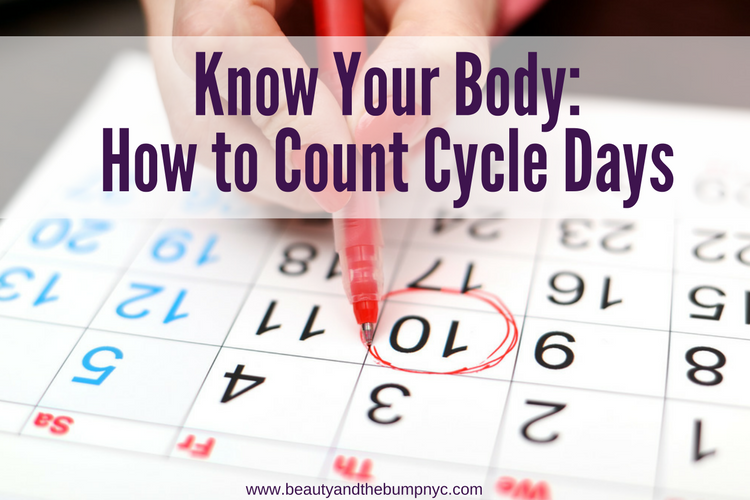I think we have all learned about the reproductive cycle in health class, and perhaps some things about the birds and the bees from our parents, siblings or friends; however, I’ve noticed through my participation on TTC boards, that there are a lot of women who are confused about how to count cycle days. I’m not going to even lie and say I knew everything about the menstrual cycle.
There were things I learned in school, and even while obtaining my Bachelors of Science degree in Community Health that taught me about the reproductive cycle and sexual health etc. However, nothing could have prepared me for what I’ve come to learn about how to count cycle days and everything else that comes along with that, until my TTC journey.
I’m going to try and explain this as simply as possible, and perhaps make this a series as to not put too much information into one post. But first, let us talk about cycle days (CD).
What is a Cycle Day?
A cycle day makes up your menstrual cycle length. Your first cycle day (CD1) is the first full flow of your period. Think of this day as the day you need your menstrual cup, a tampon or pad versus a day you can just wear a panty liner due to spotting.
How Many Cycle Days are in a Menstrual Cycle?
This is where it tends to get confusing for some women because it varies. When we were in school, we were taught that cycles are 28 days long with ovulation occurring mid-cycle on CD14; however, most women do not have “regular cycles”, and most women do not ovulate mid-cycle. Some cycles can be shorter than 28 days or longer, going up to 35+ days. According to the American Society for Reproductive Medicine, a typical menstrual cycle may be anywhere from 21 to 35 days. Ovulation, then, may occur much earlier or later than typical guidelines suggest. There is really no simple “one-size-fits-all” mathematical formula to calculate your ovulation date, but there is a way to determine your own ovulation date and fertile signs by examining your fertility signals.
I have a 28-day cycle, but, I don’t always ovulate on CD14. There are times when I ovulate a day before or later. This is why it is important to chart using a basal thermometer, check your cervical mucus, and use ovulation prediction kits.
How do I know the Last Day of My Cycle?
CD1 is the day your period begins, and all of the days up until the day before the start of your next cycle complete your cycle. Therefore, the last day of your cycle is considered the day before the start of your next period. For me, this is usually the day I start spotting before my period comes aka CD1.
Your Cycle After Menstruation AKA Aunt Flow (AF)
After the last day of AF, begins the follicular phase (FP). During this time, your body starts to release estrogen, which, in turn, causes the uterine lining to grow. A nice, thick, uterine wall is the perfect environment for the implantation of a fertilized egg. Estrogen levels rise dramatically during the days before ovulation and peak about one day before ovulation. The surge in estrogen triggers a spike in another hormone – the luteinizing hormone (LH) – the reason I go in for blood work and use OPK’s. Ovulation occurs as this increase in LH causes the follicle to
rupture and release an egg.
Also, during the FP, the release of the follicle-stimulating hormone (FSH) stimulates the growth of ovarian follicles. Each follicle contains an egg – or should contain an egg. By late in the follicular phase of the menstrual cycle, only a single follicle will remain active.
Your Cycle Days After Ovulation
After you ovulate you continue counting your cycle days in chronological order; however, the stage after ovulation is the luteal phase of your cycle. The luteal phase length is generally constant from cycle to cycle for the same woman, lasting 10-16 days. These days are usually counted as days past ovulation or DPO.
Reasons for Irregular Cycles
When cycles are irregular, it is usually because ovulation occurred earlier or later than usual. It can also be hormonal or due to an illness.
Why knowing when you ovulate during your cycle is important?
Knowing when ovulation occurred is important as it allows you to see if intercourse was well timed for conception and lets you determine your luteal phase length. Knowing your luteal phase length tells you when to expect your period or a positive pregnancy test result. For example, since I have a 28-day cycle, and O around CD14, I can test between CD25-28 or 11-14
DPO.
Whew! That was a lot! I hope after reading this you’re able to correctly count cycle days, and, perhaps teach someone else.

This post contains affiliate links.
Post updated 1/2018
